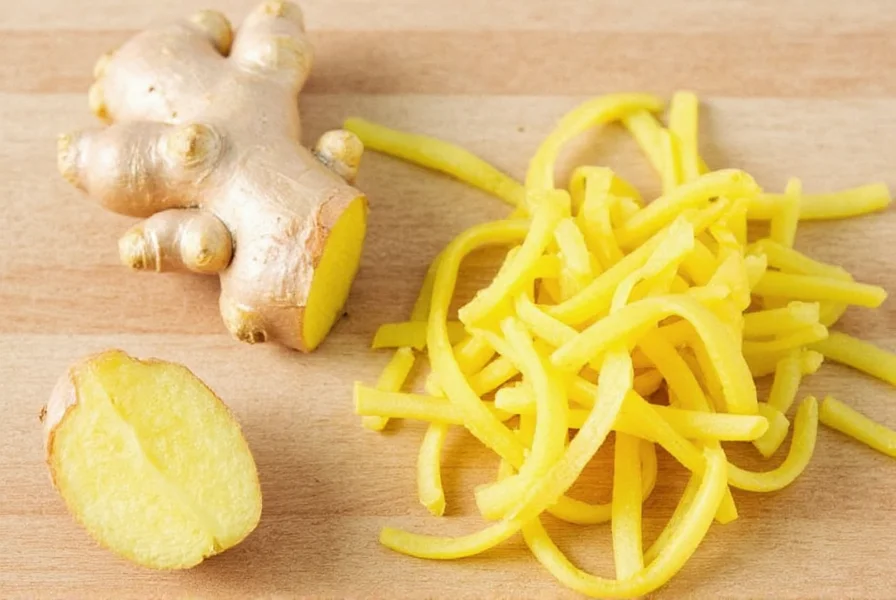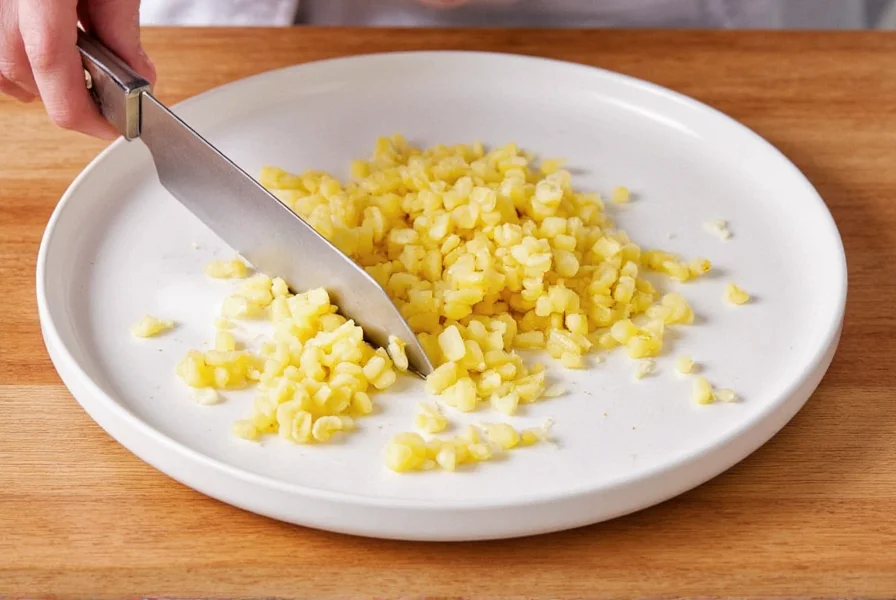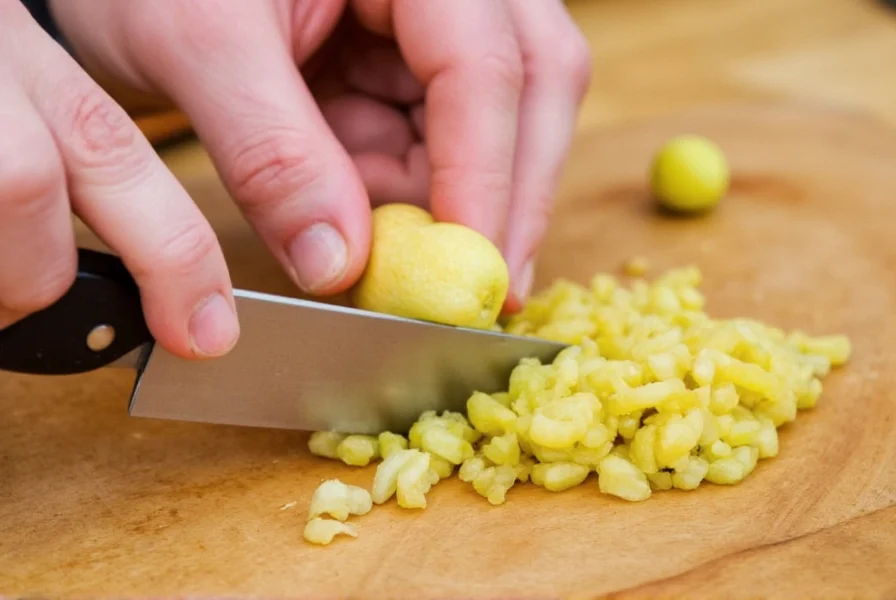The fastest and most effective way to mince ginger is by using a sharp chef's knife: peel the ginger root, slice it paper-thin, stack the slices, and make fine parallel cuts followed by crosswise mincing. For the finest texture, a microplane grater works exceptionally well, though a food processor can handle larger quantities with slightly less precision.
When preparing dishes that call for fresh ginger, proper mincing technique makes all the difference in flavor distribution and texture. Many home cooks struggle with this fibrous root, resulting in uneven pieces that can dominate a dish or get lost entirely. Understanding the right tools and methods ensures your ginger integrates perfectly into sauces, marinades, and stir-fries.
Essential Tools for Mincing Ginger
Before diving into the mincing process, gather the right equipment. While you can mince ginger with basic kitchen tools, having the proper implements significantly improves efficiency and results.
| Tool | Best For | Texture Result | Effort Level |
|---|---|---|---|
| Chef's knife | Most cooking applications | Fine, uniform pieces | Moderate |
| Microplane grater | Strong ginger flavor infusion | Very fine, almost paste-like | Low |
| Food processor | Large quantities | Coarse to medium | Low |
| Zester | Delicate dishes | Very fine threads | Moderate |
Step-by-Step Guide to Perfectly Mince Ginger

Method 1: Knife Technique (Most Control)
- Peel the ginger: Use the edge of a spoon to gently scrape off the thin skin. The spoon follows the ginger's contours better than a peeler and minimizes waste.
- Trim ends: Cut off any dry or fibrous ends.
- Slice thinly: Cut the ginger crosswise into paper-thin slices (about 1/16 inch thick).
- Stack slices: Arrange 3-4 slices in a small stack.
- Cut matchsticks: Make fine parallel cuts through the stack to create thin matchsticks.
- Mince finely: Gather the matchsticks and cut crosswise into tiny, uniform pieces.
Method 2: Microplane Grater (Fastest Method)
This technique produces the finest mince with minimal effort. Hold the microplane over your preparation surface, rub the peeled ginger against the fine holes using downward motions, and collect the minced ginger below. The microplane extracts maximum flavor compounds while creating an almost paste-like consistency that integrates seamlessly into sauces and dressings.
Method 3: Food Processor (For Large Batches)
When preparing ginger for multiple dishes or preserving larger quantities, a food processor saves considerable time. Peel and roughly chop the ginger into 1-inch pieces, then pulse in short bursts until you achieve the desired consistency. Be careful not to over-process, as ginger can quickly become a paste. This method works best when you need medium-fine mince for stir-fries or marinades.
Professional Tips for Mincing Ginger
Seasoned chefs employ several techniques to maximize flavor and efficiency when working with ginger:
- Freeze before mincing: Place peeled ginger in the freezer for 15-20 minutes. The slight firmness makes it easier to handle and produces cleaner cuts.
- Use the "rocking knife" motion: Keep the knife tip on the board and rock the blade up and down for more control and safety.
- Reserve ginger juice: When grating, collect the aromatic juice that collects beneath the grater—this concentrated flavor enhances sauces.
- Size matters: For delicate dishes like fish or custards, mince finer than for robust stir-fries where slightly larger pieces provide texture contrast.
Common Mincing Mistakes to Avoid
Many home cooks make these errors when mincing ginger, compromising both flavor and texture:
- Using a dull knife: Dull blades crush rather than cut ginger fibers, releasing bitter compounds and creating uneven pieces.
- Skipping the peeling step: The skin contains fibrous material that doesn't break down during cooking and creates unpleasant texture.
- Over-processing in food processor: Ginger turns to paste quickly, losing its distinct texture and becoming too potent.
- Mincing too far in advance: Freshly minced ginger oxidizes and loses volatile flavor compounds within 30 minutes.
Storing Minced Ginger Properly
Proper storage extends the shelf life of your freshly minced ginger while preserving flavor:
- For immediate use (within 24 hours): Store in an airtight container in the refrigerator
- For longer storage (up to 1 month): Mix with a small amount of neutral oil before refrigerating
- For extended preservation (up to 6 months): Freeze in ice cube trays with water or oil, then transfer to freezer bags
When freezing ginger, portion it into teaspoon-sized amounts for easy recipe incorporation. Frozen ginger can be added directly to hot dishes without thawing.
Why Proper Ginger Mincing Matters in Cooking
The size and consistency of minced ginger directly impacts how its flavor integrates into dishes. Finely minced ginger releases its essential oils more completely during cooking, creating a more uniform flavor distribution. In contrast, larger pieces provide bursts of intense flavor but may not distribute evenly throughout the dish.
Chefs specializing in Asian cuisine particularly emphasize proper ginger preparation, as it forms the flavor foundation for many classic dishes. The difference between well-minced and poorly prepared ginger can transform a dish from authentic and balanced to uneven and overpowering.

Adapting Mincing Technique to Your Recipe
The ideal mince size varies depending on your culinary application:
- Stir-fries and sautés: Medium-fine mince (1/8 inch pieces) provides texture contrast while distributing flavor
- Sauces and dressings: Very fine mince or grated ginger ensures smooth texture
- Baking and desserts: Ultra-fine mince prevents fibrous texture in delicate preparations
- Marinades: Medium mince allows flavor penetration without becoming mushy
Understanding how to properly mince ginger transforms this common ingredient from an afterthought to a flavor cornerstone in your cooking. Whether you're preparing a quick weeknight stir-fry or an elaborate curry, taking the time to mince ginger correctly elevates your entire dish.











 浙公网安备
33010002000092号
浙公网安备
33010002000092号 浙B2-20120091-4
浙B2-20120091-4